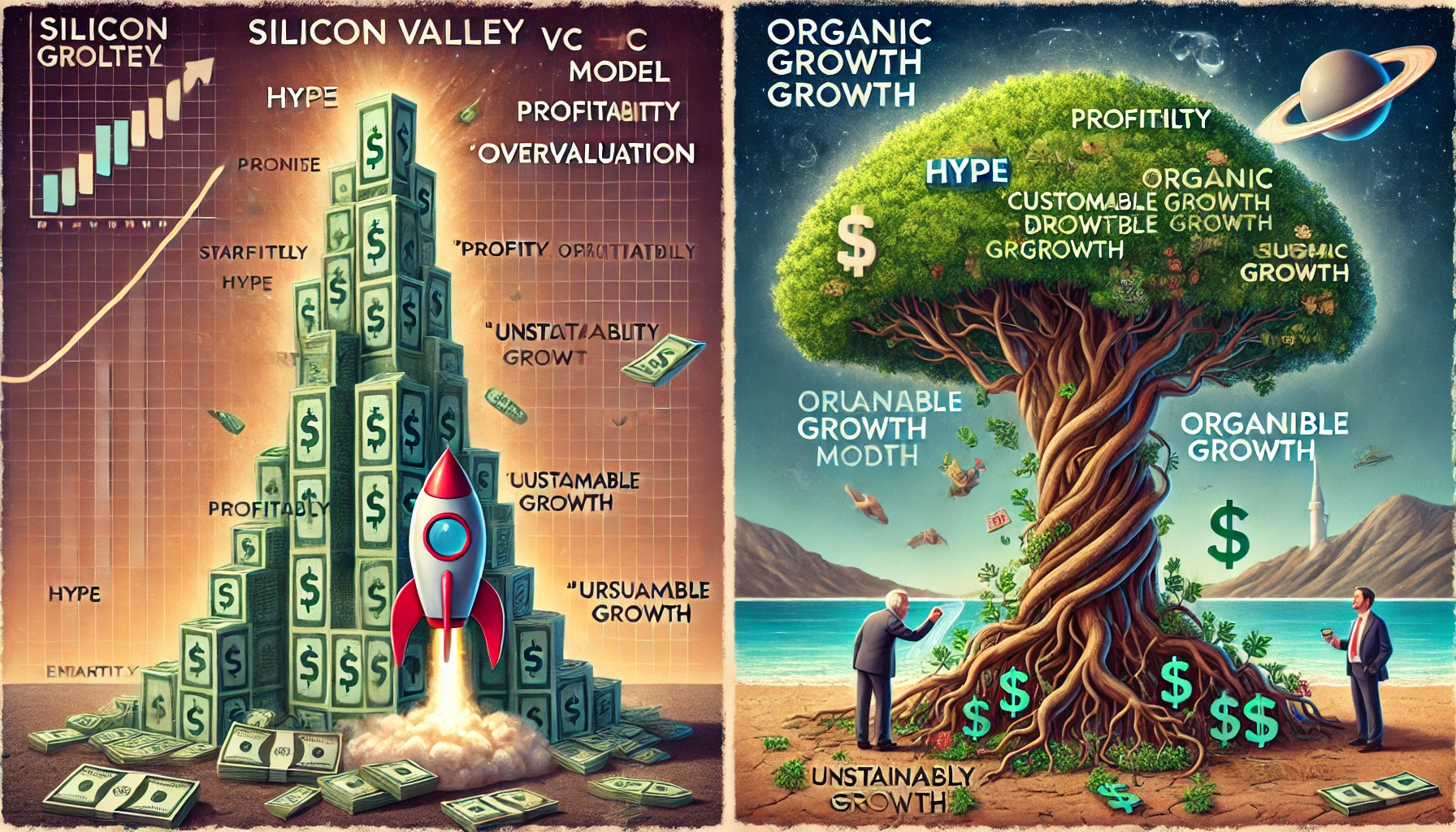The fundamentals are different
The Silicon Valley VC Model: Growth at All Costs
The Silicon Valley VC model prioritizes rapid scaling, often at the expense of profitability and sustainability.
How It Works:
- Massive Early Investment: Startups raise millions based on potential, not profits.
- Hyper-Growth Over Profits: Companies focus on acquiring users/customers, often at a loss.
- Exit-Driven Strategy: Investors push for IPOs or acquisitions as the primary way to make money.
- “Winner Takes All” Mentality: Encourages monopolistic behavior rather than steady business development.
Strengths:
✅ Breakthrough Innovation – Enables high-risk, high-reward ideas to be funded.
✅ Job Creation – Generates employment in the short term, especially in tech hubs.
✅ Global Impact – Companies like Google, Amazon, and Tesla wouldn’t exist without VC backing.
Weaknesses:
❌ Boom & Bust Cycles – Many VC-backed companies crash after IPOs (WeWork, Blue Apron).
❌ Unsustainable Growth Models – Focus on growth often leads to financial instability.
❌ Lack of Long-Term Vision – Short-term exits are prioritized over long-term business sustainability.
Alternative Models: Sales & Fundamentals-Driven Growth
Many countries (e.g., Germany, Japan, China, South Korea) focus on business models where sales, profitability, and reinvestment drive innovation, rather than venture capital.
How They Work:
- Customer-Driven Growth: Companies grow based on actual sales rather than speculative funding.
- Focus on Profitability: Expansion happens only when a business is financially stable.
- Long-Term Investment: Governments, banks, and corporations support innovation through R&D grants, partnerships, and reinvestment of earnings.
- Less Speculative, More Sustainable: Companies take fewer risks but have higher long-term stability.
Strengths:
✅ More Sustainable Growth – Companies don’t rely on constant funding rounds.
✅ Less Financial Engineering – Sales, not hype, determine valuation.
✅ Stronger Economic Foundations – Profit-driven businesses contribute directly to GDP growth.
Weaknesses:
❌ Slower Innovation Cycle – Without VC, some game-changing ideas may never get funded.
❌ Risk Aversion – Investors may avoid funding ambitious but risky projects.
❌ Difficult Market Entry – Startups without funding struggle to compete with big corporations.
Which Model Drives “Real” Economic Growth?
VC Model: Artificial Growth?
- Silicon Valley’s model creates high-valuation companies but many fail to generate sustainable wealth.
- The model relies on attracting new investors rather than business fundamentals.
- It contributes to stock market bubbles rather than long-term economic stability.
Sales-Driven Model: Stronger Foundations?
- Countries that prioritize sales/profitability (e.g., Germany’s Mittelstand) build long-lasting industries.
- Innovation is tied to market demand, ensuring businesses produce value.
- The focus on reinvestment creates more stable, long-term economic growth.
The Best Approach? A Hybrid Model
The ideal economic growth strategy would merge Silicon Valley’s risk-taking innovation with sales- and profitability-driven models seen in other economies.
✅ VC for Early-Stage Innovation – Allow startups to take risks and innovate without immediate profitability pressure.
✅ Profitability-Focused Scaling – After initial funding, startups should transition toward sustainable revenue models.
✅ Regulated Growth Metrics – Avoid financial engineering by ensuring VC-backed startups meet real economic benchmarks.
Final Verdict:
Silicon Valley’s VC model has short-term economic benefits but is prone to boom-and-bust cycles. Countries that focus on sales-driven, profit-based innovation create longer-term economic stability. A hybrid approach where startups are encouraged to innovate but must eventually prove profitability would be the most viable path for real economic growth.





Leave a Reply